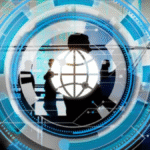In today’s unpredictable business climate, designing a remote team structure that supports agility and resilience is not just an advantage—it’s a necessity. With companies and teams distributed across time zones, leveraging the strengths of remote work requires more than good intentions. By using proven strategies and the right resources, such as through virtual assistant staffing, you can establish the foundation for a high-performing, future-ready remote workforce.
Whether managing a startup or leading a large-scale enterprise, the demands of remote collaboration call for new operating models. Building a truly agile remote team requires intentional focus on communication, trust, innovative technology, feedback, and ongoing adaptation. Adopting these principles will help you overcome common remote work challenges and unlock your team’s full potential.
Remote work models thrive when leadership actively supports social connection and professional growth. Investing in team building and skill enhancement is as essential as setting procedures. Incorporating these priorities at every stage can make the difference between a team that survives and excels.
Regular assessments, data-driven decisions, and celebrating team wins naturally reinforce a culture of improvement. Agility is built into workflows and how a team responds to feedback and unforeseen obstacles—traits increasingly indicative of successful remote teams worldwide.
Establish Clear Communication Channels
Consistent and transparent communication is the backbone of an agile remote team. Start with structured channels: daily stand-ups via video or chat syncs help disperse information, align goals, and strengthen connections. For teams distributed across different time zones, asynchronous options (such as recorded updates or detailed project boards) ensure everyone stays informed and involved.
Best Practices for Remote Communication
- Set standards around response times and meeting etiquette.
- Designate specific tools for different types of communication—such as Slack for quick questions and Zoom for discussions.
- Document key decisions and project updates for easy reference.
According to a recent Forbes article, high-performing remote teams are distinguished by intentional over-communication, which builds awareness and trust.
Foster a Culture of Trust and Accountability
Without daily face-to-face interactions, remote teams rely heavily on trust and a shared sense of accountability. Start by setting clear expectations for performance, delivery timelines, and communication. Regularly recognize achievements and provide transparent, constructive feedback to foster motivation.
Building Accountability Remotely
- Use project boards and dashboards to track work in progress and showcase accomplishments.
- Implement peer feedback and public recognition for significant contributions.
- Encourage team members to be proactive in reporting roadblocks and asking for help.
Utilize Appropriate Tools and Technologies
Practical remote work hinges on the right technology stack. Popular platforms such as Slack for communications and Trello or Asana for project management streamline workflows and prevent bottlenecks. Invest in onboarding programs that ensure every team member is proficient with your core tools.
Selecting the Best Tools
- Audit current software for gaps and redundancies regularly.
- Offer training and create internal FAQs or tip sheets.
- Gather feedback on how tools impact productivity and make adjustments as needed.
Recent guidance from Harvard Business Review emphasizes the importance of not overwhelming teams with too many tech solutions, which can lead to “tool fatigue.”
Implement Regular Feedback Loops
Agile teams improve by reflecting often. Regular feedback—through weekly retrospectives, quick surveys, or one-on-one check-ins—lets teams rapidly adapt to internal and external changes. Emphasize candor and create a safe environment for discussing what’s working or needs revision.
Running Effective Retrospectives
- Keep sessions focused and timeboxed.
- Rotate facilitators to encourage broader participation.
- Document agreed takeaways and revisit them regularly.
Encourage Flexibility and Adaptability
Rigid processes can be a liability in a fluid environment. Teams that embrace flexible schedules, remote-first documentation, and outcome-based evaluation are positioned to adapt to change, whatever its source. Allowing individuals to adjust work hours within reason accommodates global workforces and prevents burnout.
Practical Flexibility Tips
- Empower employees to set working hours that maximize their productivity.
- Support remote-first events—such as company town halls—to include all team members regardless of location.
Promote Social Interaction and Team Bonding
Sustaining morale in remote teams relies heavily on fostering genuine personal connections beyond daily tasks. Team members can easily feel isolated without in-person interactions, which impacts motivation and collaboration. Virtual coffee breaks, online game nights, and themed Slack or Teams channels offer informal opportunities to engage and share experiences. These activities encourage casual conversation, laughter, and bonding, which help replicate the sense of community found in traditional offices. By humanizing digital workspaces through consistent rituals, organizations boost team spirit, strengthen trust, improve project cooperation, and nurture a culture where employees feel connected and valued.
Provide Opportunities for Professional Development
Continuous growth plays a critical role in fostering both employee satisfaction and overall business success. When organizations actively support professional development, they cultivate a workforce that is skilled, motivated, and adaptable to change. Access to online courses, webinars, and industry workshops equips employees with updated knowledge and practical expertise. Offering stipends for certifications or professional memberships demonstrates a commitment to long-term career advancement. Additionally, incorporating career planning discussions into performance reviews helps align individual aspirations with organizational goals. This investment enhances retention and engagement and drives innovation, ensuring companies remain competitive in an evolving business landscape.
Monitor and Evaluate Team Performance
Success in remote-first environments is measured through clear, transparent metrics. Leverage key performance indicators (KPIs) tailored to your team’s objectives and use dashboards for real-time reporting. Regularly review processes, celebrate insights, and course-correct with agility to maintain a competitive edge.
By implementing these strategies, leaders can create remote teams that are both resilient and adaptable in a rapidly changing work environment. Effective practices such as clear communication, the right digital tools, and a culture of trust ensure that teams remain aligned and productive, regardless of distance. Prioritizing collaboration, professional development, and well-being fosters engagement while strengthening long-term retention. With this foundation, remote teams are equipped to meet current challenges and positioned to thrive and grow in the evolving world of work.







